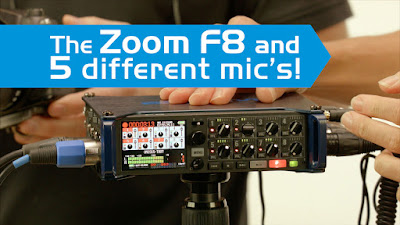With more and more HD mixer switchers becoming affordable, we're seeing the question pop up and more, "How can I convert DVI to HD-SDI?"
One of our first clients to ask this had just purchased a Newtek Tricaster TCXD300. The Tricaster has an app called "iVGA" to bring screen sharing over ethernet. As cool as this sounds, the drawback is that it would involve having the presenter install an app on their laptop. This is simply not possible for a lot of folks. The client did not want to spend the money at the time on a converter and was met with their worst fears - incompatible laptop and "AV malfunction" resulting in a battered reputation. iVGA did not work flawlessly and the live production suffered immensely.
Now with the new Blackmagic ATEM Television Studio and 1M/E mixer switchers we're seeing the DVI to HD-SDI question again and again, "How can I get a laptop, MacBook or PC into our HD switcher at 1080i or 720p?" So our company
DVeStore, actually acquired and tested all of the options we could.
Here are a few of the solutions we came up with:
Grass Valley ADVC G1 approximately $1199
Manufacturer link
Pros: Affordable, handles HDMI, DVI, RGB, component, composite, S-Video, analog audio, AES/EBU, reference. Stable, best value. Can handle VGA with an inexpensive VGA to DVI adapter.
Cons: Dip switches
Gefen DVI to HDSDI Scaler approximately $1299
Manufacturer link
Pros: Straight forward with one in and one out.
Cons: We had trouble syncing at a client's live seminar. The device did not work out of the box and autodetect. Trying to use the remote control to adjust the settings was near impossible when the HDSDI signal could not even be handled by the monitor.
Blackmagic DVI Extender $375.25
Manufacturer link
Pro: Inexpensive, simple, also carries audio
Con: DVI-D only - no VGA
AJA FS2 $4995
Manufacturer link
"Summer release" of firmware update to provide scan conversion. Currently does not support DVI to HDSDI conversion. We ordered one for testing only to find out that the firmware was not yet finished.
Roland/Edirol VC-300HD $10495
Manufacturer link
Pro: Everything in everything out including DVI-D and DVI analog 1024x768/60 Hz, 800x600/60/75 Hz, 640x480/60/75 Hz
Cons: Expensive
Update: We're now seeing the Edirol VC-300HD being blown out on eBay and
Amazon under $4,000
Matrox Convert DVI and Convert DVI Plus $995 and $1495
Manufacturer link
Pro: The new firmware on the Convert DVI
Plus now does auto-detect. Also provides region of interest support
Con: The regular Matrox Convert DVI must have settings adjusted via a Mac or PC prior to deployment. Not good if you will be having a variety of presenters with different laptops arriving at your live seminar. Does not convert analog VGA -
read how Matrox suggests using a DualHead2Go to scan convert VGA to DVI.
Also, one more to note that works rather well if you can handle DVI to HDMI, is the
GefenTV High-Defintion Scaler $349
Manufacturer link
Pro: Great value - simply add a DVI to HDMI cable. The digital ports on the back are DVI In and DVI Out.
Cons: We have had a remarkable number of these fail. It could be that they were not meant to be rack mounted and moved around.
Not tested:
Ensemble Designs BrightEye Mitto
Now with many of the new laptops we're seeing HDMI output ports built-in as well as Thunderbolt ports on the new MacBook line. You can use a simple Mini DisplayPort to HDMI adapter to get HDMI out. Remember HDMI is not as good as HD-SDI for long runs. Also, remember to set the System Preferences>Displays to an NTSC/PAL format for video. For some folks with short runs a DVI to HD-SDI converter may not even be necessary. However for those of us that have the need, it's nice to see all of the options out there.
Updated 2/26/2016
http://www.datavideo.com/us/Converters/DAC-70
http://decimator.com/Products/MiniConverters/MD-CROSS/MD-CROSS.html
There may be more so feel free to add any we missed in the comments below.







